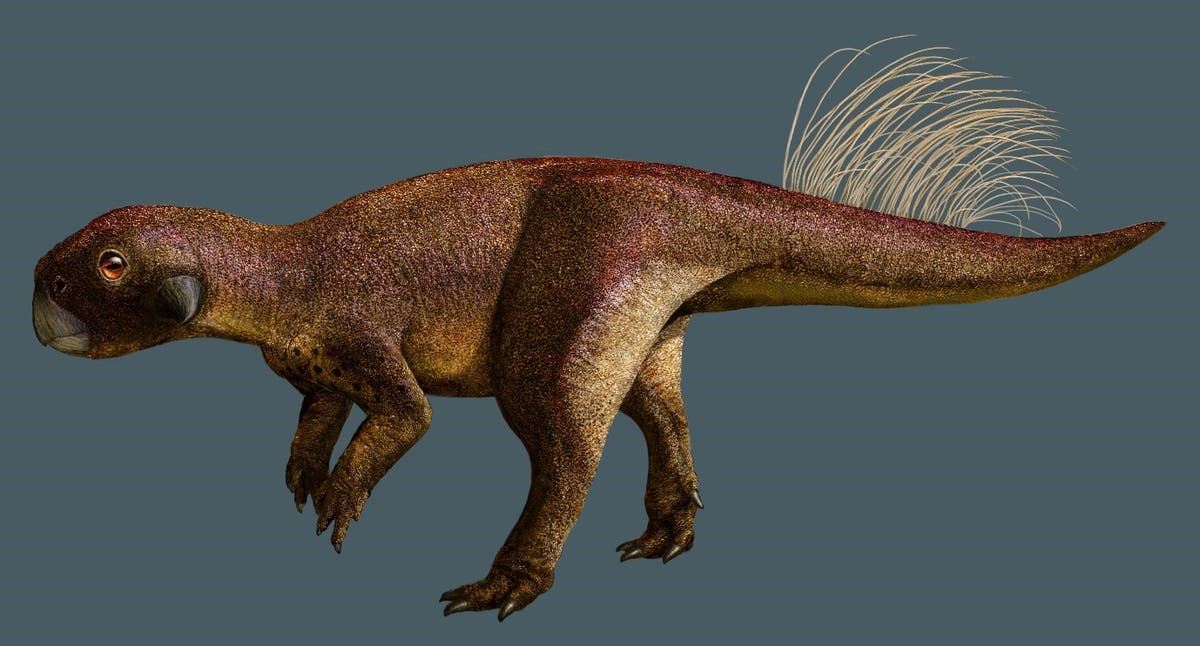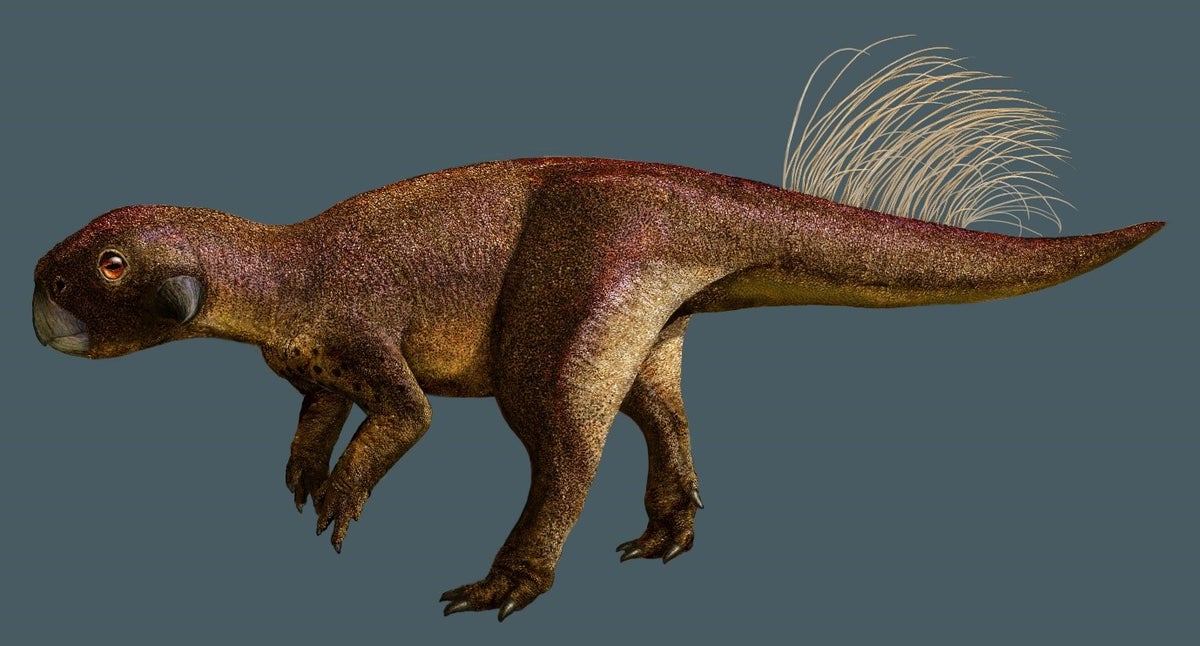Paleontologists have discovered the oldest belly button known to science in the fossil remains of a parrot-beaked dinosaur found in China.
In the research, scientists from the Chinese University of Hong Kong (CUHK) analysed the 125-million-year-old fossil of a 2m-long, two-legged herbivorous dinosaur unearthed in China 20 years ago.
The study, published earlier this month in the journal BMC Biology, used an advanced laser-imaging technique to analyse a fossilised skin specimen of the Psittacosaurus mongoliensis dinosaur that lived during the Cretaceous period about 145 million to 66 million years ago.
Scientists found a scar on the fossil skin specimen about 10cm in length that did not seem to have been caused by external trauma or disease.
“Using LSF imaging, we identified distinctive scales that surrounded a long umbilical scar in the Psittacosaurus specimen, similar to certain living lizards and crocodiles. We call this kind of scar a belly button, and it is smaller in humans,” study co-author Michael Pittman from CUHK said in a statement.
While the egg-laying nature of dinosaurs predicts a long belly button scar, researchers say the new study is the first to support this hypothesis with fossil evidence.
“This specimen is the first dinosaur fossil to preserve a belly button, which is due to its exceptional state of preservation,” Dr Pittman said.
Since they laid eggs, dinosaurs did not have an umbilical cord, but instead, the yolk sac of dinosaurs was directly attached to the body via a slit-like opening – similar to those found in modern-day egg-laying land animals, scientists say.
This opening sealed up at about the time the animal hatches, leaving a distinctive long umbilical scar, researchers noted.
“Whilst this beautiful specimen has been a sensation since it was described in 2002, we have been able to study it in a whole new light using novel laser fluorescence imaging, which reveals the scales in incredible detail,” Dr Pittman said.
Scientists say the Psittacosaurus specimen, on display at the Senckenberg Museum in Germany, is “probably the most important fossil” to study dinosaur skin.
The “exceptionally-preserved” fossil has allowed paleontologists to document individual scales, tail bristles, and also the first-ever dinosaur cloaca discovered by scientists.
Researchers found that the dinosaur’s cloaca had a “unique v-shape anatomy”.
Although first described nearly two decades ago, they say the fossil “continues to yield surprises that we can bring to life with new technology like laser imaging”.








More Stories
New vaccine may hold key to preventing Alzheimer’s, scientists say
Just 1% of pathogens released from Earth’s melting ice may wreak havoc
Europe weather: How heatwaves could forever change summer holidays abroad